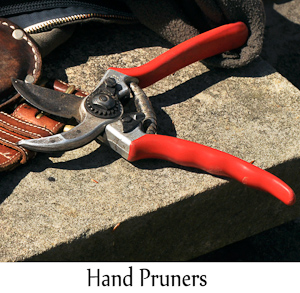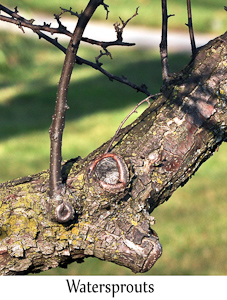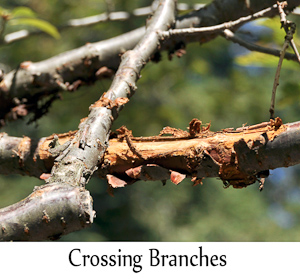 The past few days, I get the feeling that this long, dark winter is beginning to fade. Oh, it will go kicking and screaming with a few more snow storms but, the end is definitely in sight. With the melting of the snow, it is now time to get back outdoors and go to work. Maybe winter isn’t so bad after all.
The past few days, I get the feeling that this long, dark winter is beginning to fade. Oh, it will go kicking and screaming with a few more snow storms but, the end is definitely in sight. With the melting of the snow, it is now time to get back outdoors and go to work. Maybe winter isn’t so bad after all.
Spring is a great time to prune trees in the orchard or in the landscape. Most of us think of pruning as the removal of branches and twigs. That is true but pruning also stimulates new growth and how we do it will determine the direction of that growth.
We prune landscape trees to improve their shape, remove potentially dangerous growth and to try to limit size. Fruit trees are pruned to improve the yield of fruit. Each type of pruning has its own goals and techniques.
 When pruning apple, peach, pear and other fruit trees we want to establish several strong, fruit-bearing branches called scaffolds. We also want to open up the canopy so that sunlight and sprays may penetrate into the interior of the tree. A well pruned fruit tree may appear “butchered” to the average homeowner. In fruit trees, beauty is found in an abundant crop of well formed fruit next fall.
When pruning apple, peach, pear and other fruit trees we want to establish several strong, fruit-bearing branches called scaffolds. We also want to open up the canopy so that sunlight and sprays may penetrate into the interior of the tree. A well pruned fruit tree may appear “butchered” to the average homeowner. In fruit trees, beauty is found in an abundant crop of well formed fruit next fall.
Landscape trees are pruned for aesthetics and safety. If you plant the right tree in the right site, you should have to do very little pruning. Given enough space and separation from houses, driveways, streets and power lines, most trees will grow just fine on their own.
Pruning trees is both an art and a science. The science consists of understanding how trees grow and how to guard their health. Art involves being able to imagine what the tree will look like six months after you prune it.
Following a few general rules will help guarantee success in pruning trees. One of these is to avoid leaving stubs. When using hand pruners, cut small branches back close to the larger stem. Small tubs will only die and provide a place for insects and diseases to enter the plant. Plus they will interfere with your enjoyment of the tree. Stubs are ugly.
Speaking of pruners, one key rule is to keep all blades sharp. A wide range of hand pruners, loppers and saws are available. The most important factor is to buy good quality equipment which will hold a sharp edge. Dull pruner blades will cause ragged cuts which do not close easily and look awful. Cheap equipment tends to be made of lower quality steel and is more difficult to keep sharp.
In the olden days, we used to apply a thick, tar-like compound to the larger wounds created by pruning. Research has shown that these compounds may actually cause more harm than good. They seal moisture next the wound and this may encourage rot and other fungal problems. So, the general recommendation is to avoid using pruning sealants.
There are two exceptions to the rule. One is when pruning peach trees. Since peaches are susceptible to an insect borer that enters through wounds, sealants are often used to protect them. The other exception occurs when pruning red oak trees.
 Oaks and more specifically, primarily red oaks, are susceptible to a serious disease called oak wilt. This fungal disease is spread by small beetles visiting an infected tree and then flying off to another tree. The insects are attracted to fresh, open wounds so the recommendation is to avoid pruning oaks during the growing season. If you absolutely must prune them when the leaves are present, use a sealant to cover the wounds. Otherwise, prune oak trees during the dormant season i.e. when the leaves are off, and the insects are not active.
Oaks and more specifically, primarily red oaks, are susceptible to a serious disease called oak wilt. This fungal disease is spread by small beetles visiting an infected tree and then flying off to another tree. The insects are attracted to fresh, open wounds so the recommendation is to avoid pruning oaks during the growing season. If you absolutely must prune them when the leaves are present, use a sealant to cover the wounds. Otherwise, prune oak trees during the dormant season i.e. when the leaves are off, and the insects are not active.
Finally, avoid pruning spring flowering shrubs such as lilacs, forsythia, rhododendrons, magnolias and others until after they bloom. Shrubs that bloom in April and May develop flower buds the previous autumn. To prune them now will only reduce the number of flowers for your enjoyment.
